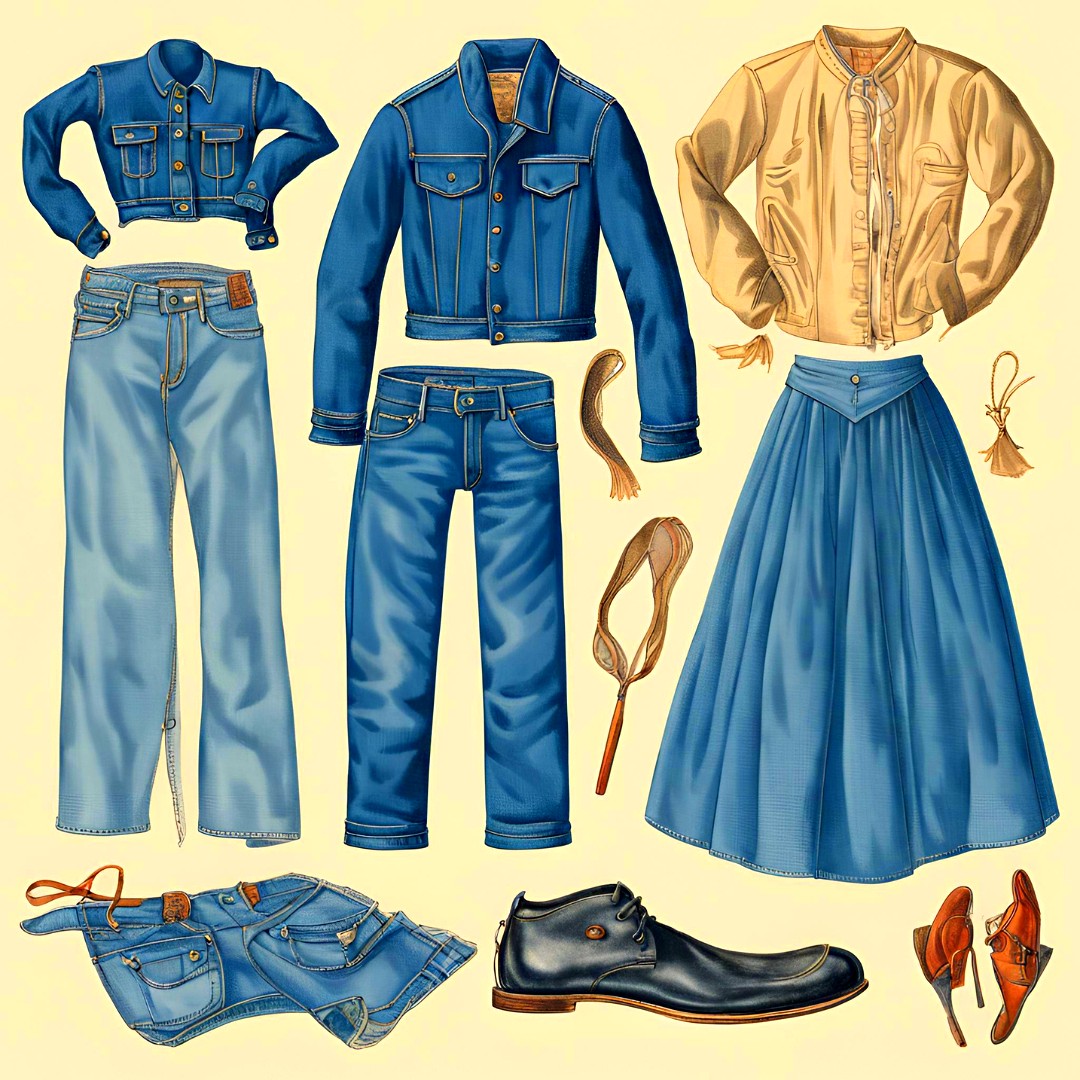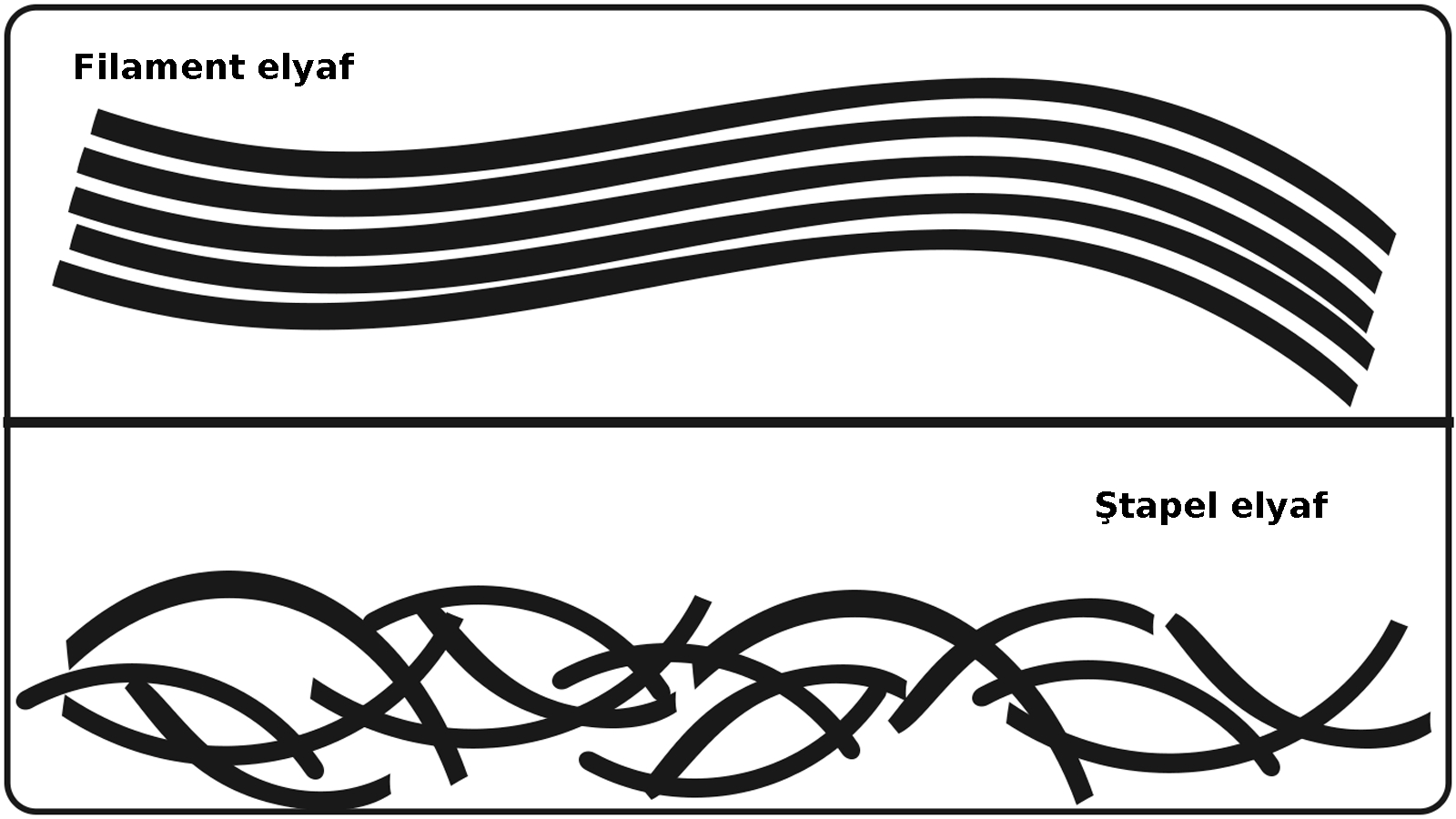Double Knitting
19:43
0 comments
Two Sets of Needles
Knit fabrics can be made on more than one set of needles. Unlike single knit fabrics, double knits are produced from two sets of needles. While circular machines can be used to produce single knits, they can also be set up to create double knits by arranging a second set of needles in a dial above the cylinder. A circular knit machine has tricks in two places: in the cylinder below and the circular dial just above. Also, there is a precise gap between the cylinder and the dial. This distance is referred to as dial height. The dial height is important because it directly affects the stitch length which controls physical parameters such as weight, width, thickness, strength, and hand. The dial has grooves cut in the outer perimeter in the same cut or gauge as the cylinder. Another view shows that the needles in the dial rest horizontally in their grooves. When double knit fabrics are produced, the knitting cycles of knit, tuck, and float are the same for the dial as they are for the cylinder. The needles in both the dial and cylinder have butts and are cam activated. Because two sets of needles are used, sinkers are not needed. As the yarn is knit and the fabric is formed, the tubular goods are removed to the inside of the cylinder as with single knits. Another type of weft knitting machine designed to make single and double knit fabrics is a flat bed machine. These machines may have the two needle beds in the same plane but usually they are set up in a V configuration and then referred to as a V bed machine. These knitting machines are used to produce tubular fabrics or flat panels that can be put together to form a garment. Because the width within a panel can vary, this system minimizes waste and sewing. Also, the technology has matured so that a complete garment can be made on this machine. Here is how V bed machines create the loops required to create a double knit fabric. First, loops are at rest, then both loops clear the latch. New yarn is received and both loops cast off as new stitches form. You may notice that these actions result in a fabric that is structured differently than a single knit. You’ve seen how weft knit fabrics can be made on either circular or a V bed machine with one or two sets of needles. Remember when it’s two sets of needles, we define it as double knit.
1-) Rib Gaiting
On a knitting machine, needles are gaited, or spaced, in the dial and the cylinder in relationship to each other. With ribbed gaiting, the two sets of needles are not directly opposite each other, the needles of the cylinder are between the needles of the dial. Both sets of needles can knit at the same time without touching or hitting each other. Although all needles have the same length, the butts are in two different locations which activates the needles to create the patterning. Rib gaiting results in a fabric where face loops and back loops alternate in the same course. A face wale is made by needles on the cylinder, a back wale is made by needles on the dial. Look closely at the structure of the fabric and you see that a vertical line, or wale of visible crowns, is arranged between two lines of vertical lines of visible legs. This construction is 1 x 1 rib where both sides of the fabric look the same. There are different notation systems for needle selection. This example shows how knit loops alternate one by one on dial and cylinder needles, this notation is for a 1 X 1 rib. Notice that both long butt and short butt needles are selected. The second notation is for a two by two rib. Here you see for each feed of yarn, two loops produced on the dial are alternated with two loops produced by the cylinder. Note that with this configuration, only needles with long butt positions knit while the needles with short butt positions do not knit. Because basic rib knits have alternation of face and back wales the structure can easily be stretched. In a normal relaxed state, the back wales hide behind the face wales. When stretched in the width the structure opens like an accordion resulting in more stretch than single knits and other double knits. The back wales now become visible. When pulled in the length direction, the back wales move behind the face wales and the fabric becomes more narrow. Because of this extensibility, basic ribs are used for dresses and sweaters as well as for neck collars, arm and waist bands. Another commonly used construction for rib gaited double knits is swiss pique. Its structure is a bit more complicated. This notation shows you the pattern for knitting on the cylinder below and the dial on top. With feed 1 of yarn, the machine knits on all the cylinder needles but on the dial the machines uses only the needles with long butt positions. With feed 2, it misses all the cylinder needles and knits only the dial needles with butts in the long positions. With feed 3, the machine knits with all the needles on the cylinder but only with the dial needles that have butts in the short position. With feed 4, the machine knits only the dial needles with butts in the short position. The swiss pique produced from this needle pattern has a distinctive texture and appearance. The fabric produced has good stability and does not curl.
2-) Interlock Gaiting
A second type of gaiting where needles are placed opposite of each other is interlock gaiting. In interlock gaiting, cylinder and dial needles are spaced so that they are directly opposed. To prevent needles from hitting each other during the knitting cycle, opposing needles are not selected at the same time. When needle 1 in the cylinder is knitting, the corresponding needle 1 in the dial must rest. This is achieved by the alternating needles in the dial and the cylinder never being activated at the same time. This requires two cam tracks for both needle beds. Therefore, the location of the butts on the needle shank must be in two positions. Most commonly used are butts in short and long configurations as seen in this illustration. Needles with long and short butts are alternatively arranged in the cylinder and also in the dial. During each feed or coarse of yarn, only half the needles are used. On course one, only needles with long butt positions knit, those placed in odd positions of the cylinder and even positions of the dial. On the second course of yarn or feed the short butt position needles knit 0-p in even positions of the cylinder and odd positions of the dial. Two feeds are required to complete a full course of interlocking knit, whereas in 1 x 1 rib knitting only one feed is required to make a visible course. Look at the resulting structure of an interlocking fabric. Follow one course across different wales and you will see a complex knit. Remember that two feeds are required for one course of knit. This first colored yarn (blue) knits on odd dial and even cylinder needles. The second colored yarn (green) knits on odd cylinder and even dial needles. Because loops interlock and alternate from the front to the back the structure of interlock fabric is more rigid and stable than that of a rib. At closer inspection, you can see that interlock is the meshing or interlocking of two 1 x 1 rib courses. This prevents adjacent wales from having mobility. Different double knit constructions can be made on rib and interlock gaited machines. Needle selection by mechanical and/or electronic systems along with yarn selection determines the design effect. A variation of an interlock knit can be used to produce a structure that is tight and stable, where one course of fabric is attached and interlocked while the next is not. Ponte de Roma, used for women’s dresses and suits is an example of this. This fabric has the same appearance on both sides. Here is the notation for this type of fabric. During the first two feeds, the machine knits interlock. With the third feed, the machine knits jersey on only the cylinder needles. On feed four, jersey is knit on only the dial needles. It takes four yarn feeds to make two visual courses. Although it is smooth, Ponte de Roma has a slight horizontal rib appearance and is thicker and more stable than overlock.
-
İş sağlığı ve güvenliği için bazı işletmelerde pr ayakkabı kullanımı gereklidir. Ayakkabılarda rastladığımız "PR" terimi, İngiliz...
-
Ayakkabılarda doğru numara seçimi sağlık ve kullanım ömrü açısından önem arz eder. Kesirli Ayakkabı Numaraları Ne Anlama Geliyor? 🤔 Bazı a...
-
Mavi polycotton nevresim takımı. Polycotton , polyester ile pamuğu (cotton) karıştırarak elde edilen, her iki elyafın en iyi performans ...
-
Yeşil renk ve tonları, sarı ile mavi ışığın birleşmesi sonucu oluşur ve fotosentetik pigmentler nedeniyle bitki yapraklarında yaygın olarak ...
-
Kumaşın ön yüzünün ve arka yüzünün gösterimi. Kumaş yüzü (Alm. Stoffvorderseite, Fr. front de tissue, İng. fabric face; face of fab...
-
Lif kısaltmaları tekstilde elbise üretiminin her aşamasında kullanılır. Tekstil, Kumaş, Lif ve Elyaf Kısaltmaları : Tekstil endüstrisi, lif...
-
Rahat bir kullanım için ayağın genişliği ve uzunluğuna uygun ayakkabıyı seçmek son derece önemlidir. Ayakkabı Genişlik Terimleri: E, F, FX,...
-
Şali kumaş bayrak. Şali , tiftik iplikten dokunmuş ince bir kumaş türüdür. Kaba ve seyrek dokunanları genelde bayrak yapımında kullanılmış...
-
Parlement mavisi rengi, denizin hava kararırken aldığı renk olarak tanımlanabilecek mavidir. Parlement mavisi, orijinal olarak lapis lazul...
-
İngilizce renkler. İngilizcede renk kelimesi Amerikan İngilizcesinde "color", İngilizce İngilizcesinde "colour" olarak ...
-
Türk tekstil ve hazır giyim sektörü: yerli markaların yükselişi. Türkiye'nin lokomotif sektörlerinden biri olan tekstil ve hazır giyim...
-
Akrilik elyaf, iyi yalıtım özelliğine sahip olmasıyla öne çıkan sentetik bir lif türüdür. Akrilik Elyaf: Tanım ve Özellikler Akrilik, ( Alm....
-
Kumaş numunesi. 1) Yapılarına göre (nasıl yapıldıysa o ismi alır) a) Dokunmamış kumaşlar - Nonwoven , keçeler, kağıt telalar, elyaf, vi...
-
Ünlü Türk modacı ve tasarımcılarının kreasyonları artık dünya moda başkentlerinde sergileniyor. Türkiye'de tekstil ve moda sektörünü...
-
Farklı renk ve türdeki kumaş çeşitleri. Kumaş, ipliklerin, çeşitli yöntemlerle bir araya getirilerek oluşturduğu kaplayıcı yüzeylerd...
-
Türk ayakkabı markaları, yerli ham maddeyi mükemmel işçilik ve estetik tasarımlarla birleştiriyor. Türk malı ayakkabı ürünler, kalitesi ve e...
-
Dünyanın en meşhur modacıları. Dünyaca ünlü modacılar Her sezon önce podyumları sonra da vitrinleri süsleyen özel koleksiyonların arkas...
-
Lif kısaltmaları tekstilde elbise üretiminin her aşamasında kullanılır. Tekstil, Kumaş, Lif ve Elyaf Kısaltmaları : Tekstil endüstrisi, lif...
-
Naylon olarak da bilinen polyamid kumaşlar sentetik kökenli bir kumaş türüdür. Polyamid ya da naylon (Alm. Polyamidfaser, Fr. fibre ...
-
Tekstil ürünlerinin etiketlerinde yıkama, kurutma ve ütüleme ile ilgili semboller bulunur. Tekstil Ürünleri için Tavsiye Edilen Yıkama Tali...




















































































































0 yorum:
Yorum Gönder
Merhaba, daha kaliteli bir site için yorumlarınızı bekliyoruz.